macOS Basics -
Working with Files

macOS Basics
Working with Files


/en/macosbasics/navigating-macos/content/
Understanding how to work with files and folders is an important part of using your computer. Once you understand how files and folder work, you'll use them all the time. In this lesson, we'll show you the basics of working with files, including how to open files, move your files into folders, and delete files.
Watch the video below to learn more about working with files and folders.
Watch the video below to learn more about the macOS Finder.
There are many different types of files you can use. For example, Microsoft Word documents, digital photos, digital music, and digital videos are all types of files. You might even think of a file as a digital version of a real-world thing you can interact with on your computer. When you use different applications, you'll often be viewing, creating, or editing files.
Files are usually represented by an icon. In the image below, you can see a few different types of files on the desktop.

macOS uses folders to help you organize files. You can put files inside a folder, just like you would put documents inside a real folder. In the image below, you can see some folders on the desktop.

You can view and organize your files and folders using a built-in application known as Finder.
To open Finder, click the Finder icon on the Dock, or double-click any folder on your desktop. A new Finder window will appear. Now you're ready to start working with files and folders.
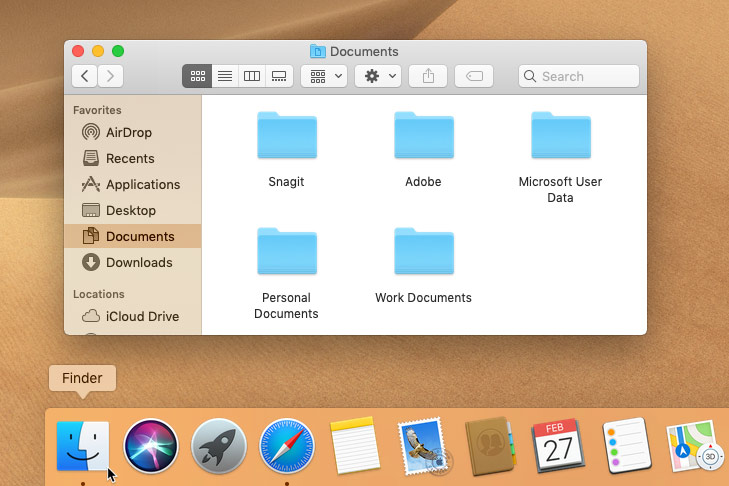
From Finder, double-click a folder to open it. You can then see all of the files stored in that folder. You can also click a location in the Sidebar on the left to go to a different folder.
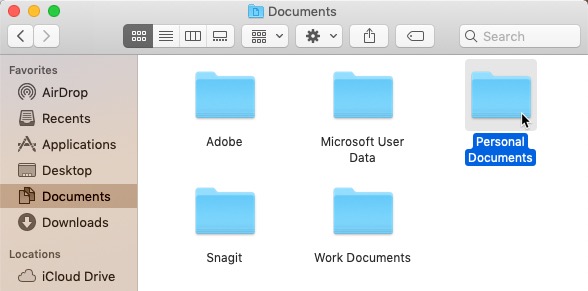
Note that you can see the name of the current folder at the top of the Finder window.
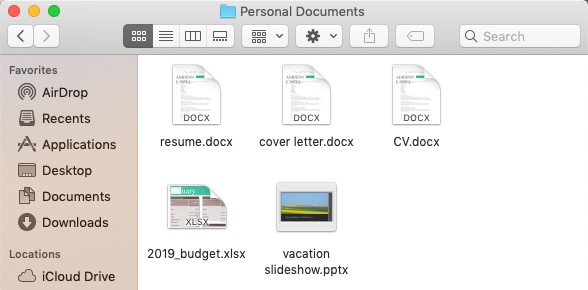
If the Sidebar isn't visible on the left side of the Finder window, select View > Show Sidebar from the Menu bar.
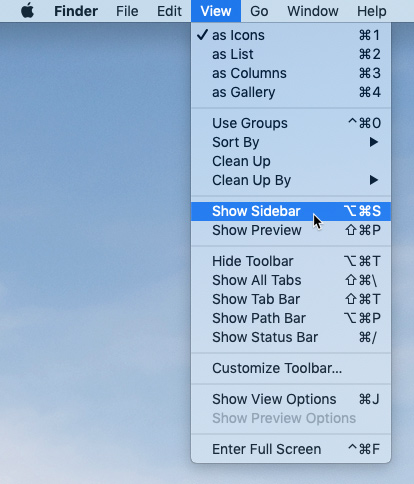
There are two primary ways to open a file:

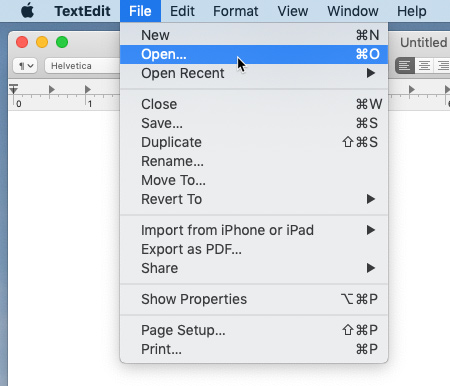
As you begin using your computer, you will start to collect more and more files, which can make it more difficult to find the files you need. Fortunately, macOS allows you to move files to different folders and delete files you longer use.
It's easy to move a file from one location to another. For example, you might have a file on the desktop that you want to move to your Documents folder.
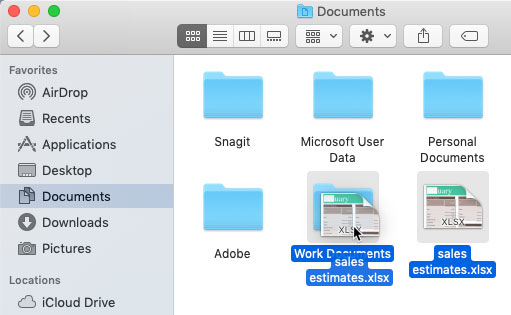
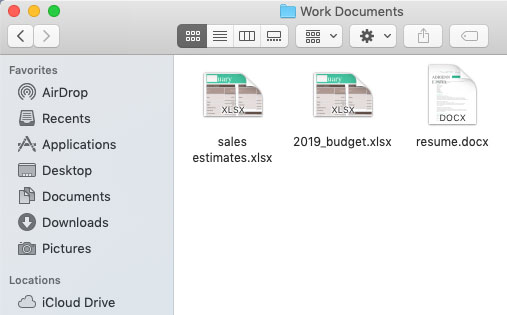
You can use this same technique to move an entire folder. Note that moving a folder will also move all of the files within that folder.
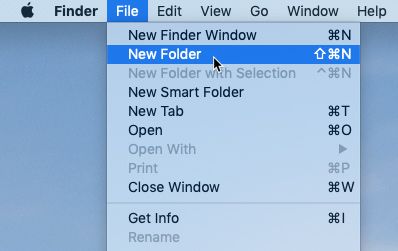
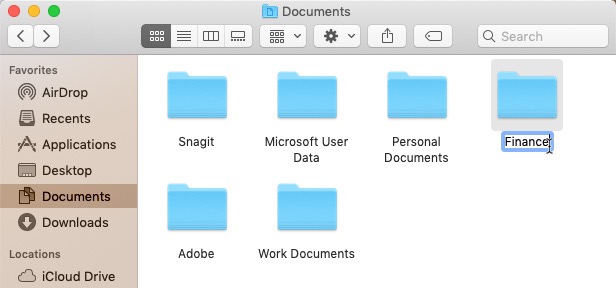
You can change the name of any file or folder. A unique name will make it easier to remember what type of information is saved in the file or folder.
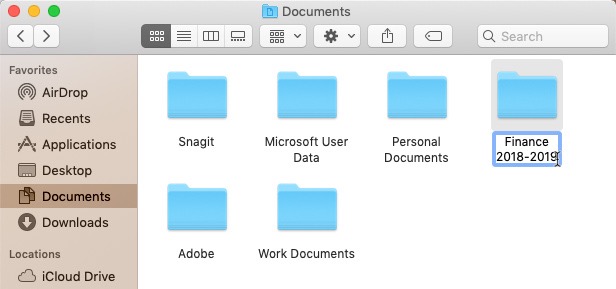
If you no longer need to use a file, you can delete it. When you delete a file, it is moved to the Trash. If you change your mind, you can move the file from the Trash back to its original location. If you're sure you want to permanently delete the file, you will need to empty the Trash.
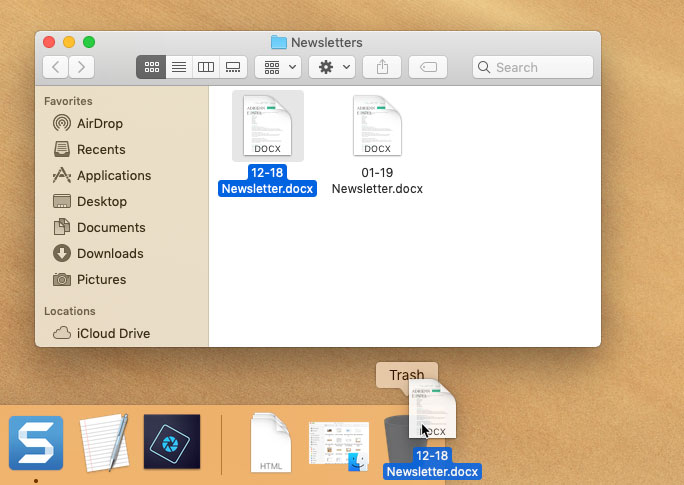
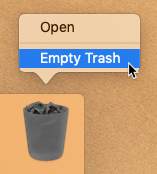
Note that deleting a folder will also delete all of the files within that folder.
Now that you know the basics, here are a few tips to help you move your files even faster.
There are a few ways to select more than one file at a time.
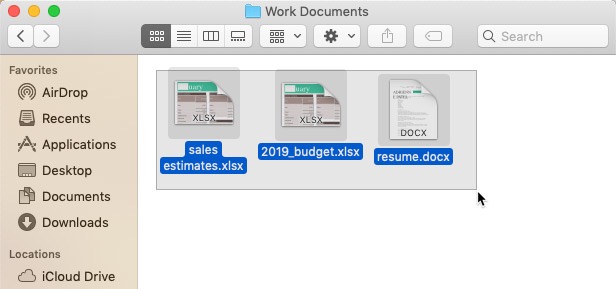
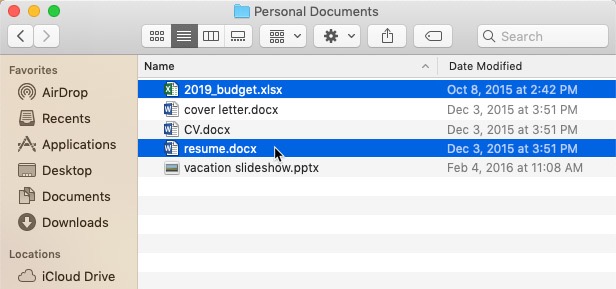
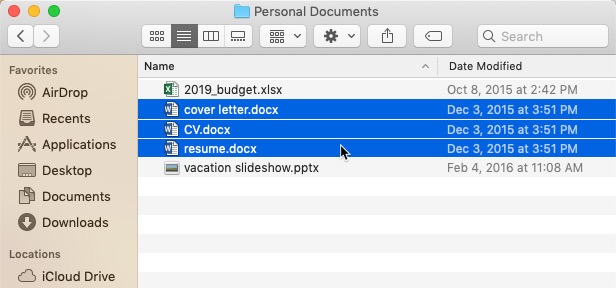
If you want to select all files in a folder at the same time, open the folder in Finder and press Command+A on your keyboard. All of the files in the folder will be selected.
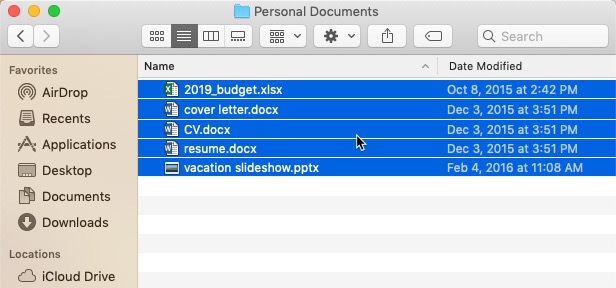
If working with files and folders feels a little tricky right now, don't worry! Like anything else, working with files and folders is largely a matter of practice. You'll start to feel more comfortable as you continue using your computer. In the next lesson, we'll talk about another important concept: how to find files on your computer that you can't easily locate.
If you have a file or folder you use frequently, you can save time by creating a shortcut on the desktop. Instead of navigating to the file or folder every time you want to use it, you can simply double-click the shortcut to open it. A shortcut will have a small arrow in the lower-left corner of the icon.
Note that creating a shortcut does not create a duplicate copy of the folder. It's simply a way to access it more quickly. If you delete a shortcut, it will not delete the actual folder or the files it contains. Also note that copying a shortcut onto a flash drive will not work. If you want to bring a file with you, you'll need to navigate to the actual location of the file and copy it to the flash drive.
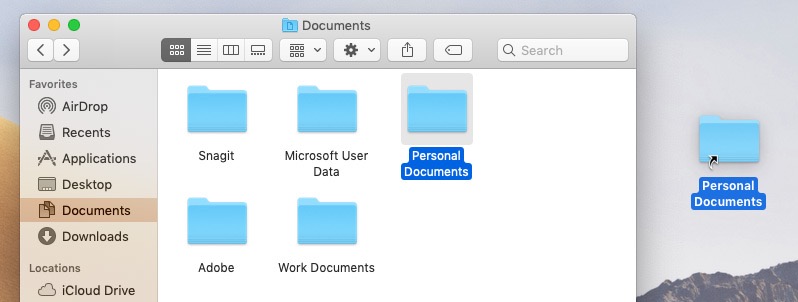
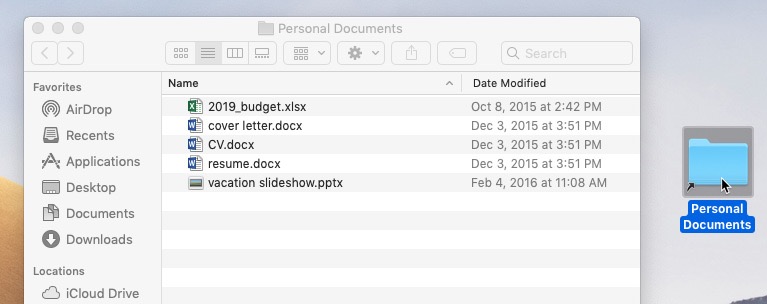
/en/macosbasics/finding-files-on-your-computer/content/